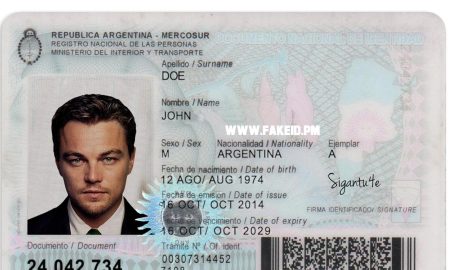Id Card Fake
2024-06-12 2024-06-12 13:31Id Card Fake

Id Card Fake
Finland Fake Passport
Argentina Fake Id Card Scannable
Ireland Fake Id Card Scannable
In today’s digital age, the prevalence of fake ID cards has become a growing concern. With the advancement of technology, creating counterfeit identification cards has become easier than ever before. These fake IDs are often used by individuals looking to gain access to places or services that are restricted to certain age groups, such as purchasing alcohol or entering nightclubs. In some cases, fake IDs may also be used for more nefarious purposes, such as identity theft or fraud.
The availability of fake ID cards online has made it even more challenging for authorities to crack down on their distribution. Websites offering to create high-quality fake IDs have popped up all over the internet, making it easy for anyone to order a counterfeit identification card with just a few clicks. These websites often promise authenticity and guaranteed delivery, making them an attractive option for those looking to obtain a fake ID quickly and discreetly.
One of the most common uses of fake ID cards is by underage individuals looking to purchase alcohol or gain entry to clubs and bars. With age restrictions in place for the consumption of alcohol in many countries, teenagers often turn to fake IDs as a way to circumvent the law and gain access to these establishments. This not only puts the underage individual at risk of legal repercussions, but it also poses a danger to public safety, as minors may not have the maturity or responsibility to handle alcohol consumption responsibly.
In addition to underage drinking, fake ID cards are also commonly used by individuals looking to engage in fraudulent activities. Identity theft is a serious crime that can have lasting repercussions for its victims. By using a fake ID card with someone else’s information, fraudsters can open lines of credit, obtain loans, and make unauthorized purchases, all in the victim’s name. The victim may not even realize that their identity has been stolen until they start receiving bills for purchases they never made.
The rise of fake ID cards has also raised concerns about national security. In an age of heightened terrorism threats, the ability to create counterfeit identification cards poses a significant risk to the safety of citizens. Terrorists could potentially use fake IDs to gain access to secure locations or board flights under false identities, making it easier for them to carry out their malicious intentions undetected.
Law enforcement agencies around the world have been working tirelessly to combat the distribution of fake ID cards. In the United States, agencies such as the Department of Homeland Security and the Secret Service have been cracking down on websites offering counterfeit identification cards for sale. These efforts have resulted in the shutdown of numerous websites and the arrest of individuals involved in the production and distribution of fake IDs.
Despite these efforts, the problem of fake ID cards persists, with new websites popping up to take the place of those that have been shut down. This cat-and-mouse game between law enforcement and counterfeiters highlights the challenges in combating the spread of fake IDs in today’s digital age. As technology continues to advance, it is crucial that authorities remain vigilant in their efforts to detect and prevent the distribution of counterfeit identification cards.
In conclusion, the proliferation of fake ID cards poses a serious threat to public safety and national security. Whether used for underage drinking, identity theft, or fraudulent activities, counterfeit identification cards have the potential to cause harm and chaos in society. It is imperative that individuals resist the temptation to use fake IDs and that law enforcement agencies continue their efforts to crack down on the production and distribution of these counterfeit documents. Only through a concerted and coordinated effort can we hope to stem the tide of fake ID cards and protect the safety and security of our communities.
















